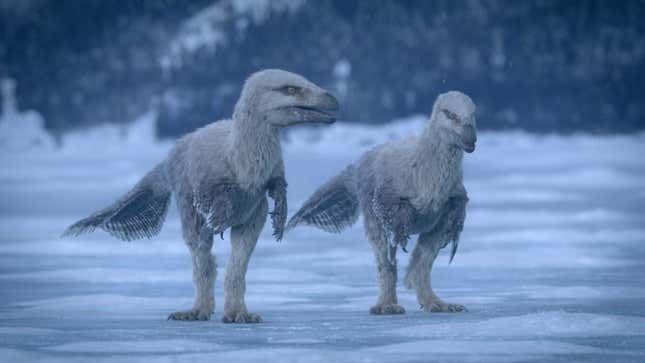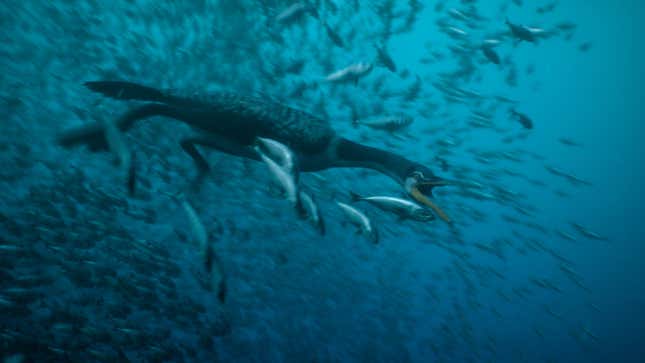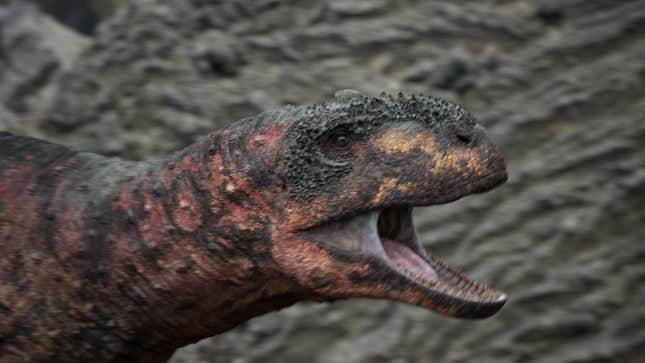
Behold the newest snarling, scurrying, foraging, and feasting dinosaurs and other extinct creatures of Prehistoric Planet.
The show’s second season begins May 22 on Apple TV+, featuring over two dozen new species from various branches of the tree of life as it existed some 66 million years ago, give or take a few million (well, don’t take more than a couple.)
I spoke with showrunner Tim Walker and Darren Naish, a paleozoologist and the series’s chief scientific consultant, to learn what to expect from the new season and, potentially, more seasons or shows down the line.
“It’s going to feel really different,” Naish said. It will offer “a deeper, more intimate view of this world, with so many new behavioral interactions that carry through a number of really crucial messages about what the world of the late Cretaceous was like.”
Pop culture is rife with misrepresentations of ancient organisms. Prehistoric Planet’s first season aimed to correct the narrative, spotlighting a bevy of beasts, including the massive pterosaur Quetzalcoatlus, the cassowary-like Corythoraptor, and the theropod Tyrannosaurus rex. (We’re talking about the late Cretaceous; there’s always a T. rex.)
The second season picks up where the first left off and adds 25 fresh species to the cast, along with familiar faces from the first season. Chief among the new troupe are oft-overlooked inhabitants of the Dinosaur Age—perhaps because they’re not dinosaurs.
In the premiere, the herbivorous crocodylomorph Simosuchus and the mammal Adalatherium show up in a rather charming tableau of Cretaceous-era Madagascar, where life was able to evolve independently (and thus, uniquely) from life on the African continent.
Dynamic moments like Adalatherium hiding from a predator and Corythoraptors getting their eggs stolen from under their noses—erm, beaks—play out in night vision, lending the scenes the feeling of a genuine nature documentary.
“We’re starting to get to the pinnacle of CGI production in terms of photorealism,” Walker said, “incorporating the other aspects of wildlife filmmaking techniques is all part of the time-traveling natural history genre that we created.”

But showcasing dinosaurs and their contemporaries in all the scaly, feathery, and furry trappings of top-notch CGI wouldn’t be enough. Both Naish and Walker spoke to the intimate storylines of the various creatures: their regular failures and good fortune in the struggle to survive, at least long enough to procreate. Little moments, like the slight stumble of a velociraptor, endear the creatures to us as we can’t help but human meanings to their behavior—just like we do with viral animal videos.
Naish said the team built out the Prehistoric Planet models using modern creatures as analogues. Some pterosaurs “probably behaved in stork-like fashion,” Naish explained, and the stocky Simosuchus took cues from modern crocodilians and armadillos.
“One of the key take-homes for me—and I hope people will pick up on this—is how complex it was, because, contrary to the sort of old-fashioned view that the complexity was far less in the past than it is today, all the studies that are being done on that now are contradicting that,” Naish said. “The late Cretaceous world was as complex as that of today. We’ve just lost most of that complexity because of, you know, extinctions. So life has got to build itself up from a starting point again.”
Each episode also has a segment of Prehistoric Planet: Uncovered, a sequence they had previously developed but only added for season 2. This might ring familiar to HBO fans; it is a “how we made it” in the spirit of the behind-the-scenes explorations of Game of Thrones and Succession. But, of course, Prehistoric Planet: Uncovered is bolstered by researchers describing the scientific consensus and how it was incorporated in the show, rather than the CGI dinos’ tremendous acting.
Click through to see some of our favorite characters from Prehistoric Planet’s second season.















